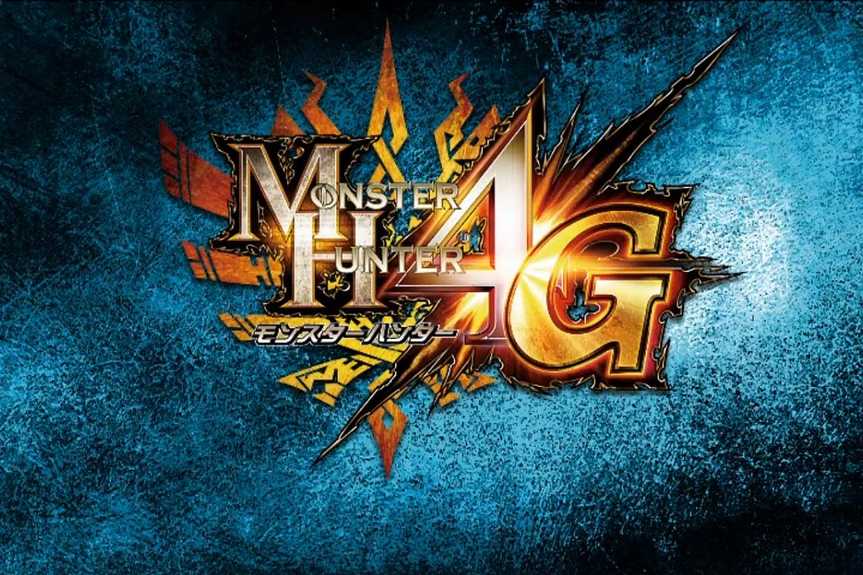“Monster Hunter 4 Ultimate” video game gains popularity in America
One of Capcom’s latest video games Monster Hunter 4 Ultimate hit North American shores earlier this year with record-breaking sales, foreshadowing a possible revolution to social gaming in America
March 29, 2015
Defeating towering monsters such as giant crabs, mythical beasts and majestic dragons with skills and strategies as a hunter is what Capcom’s “Monster Hunter” video game series is all about.
“Monster Hunter 4 Ultimate” — the eighth and newest game of the series — was released in North America on Feb. 14, 2015 for the Nintendo 3DS — a handheld gaming console.
Originally released in Japan on Oct. 11, 2014, it went on to sell 2.7 million copies region-wide. In North America, 290,000 copies were sold the first month of its release, making it the fastest selling “Monster Hunter” game in North America.
In comparison, the last North American “Monster Hunter” release, “Monster Hunter 3,” only sold 94,341 units in its first week. Based on this data, it is apparent that “Monster Hunter” is hugely popular in Japan, outselling every other game released there last year, excluding Pokemon.
The “Monster Hunter” games, especially the ones released for portable consoles such as the 3DS, are a Japanese social phenomenon.
In Japan, it’s not uncommon for school kids to get together during breaks or after school to play this game together. Walk into a coffee shop and you are likely to see a group of young adults or two playing together. The accessibility and convenience that comes with playing the game on a mobile platform makes it easy for people to get together, connect their consoles wirelessly and take down a giant monster or two as a team.
So why is Monster Hunter suddenly gaining popularity in North America?
Monster Hunter is an action role-playing game (RPG) that tasks players with slaying monsters and using their scales, bones and other materials to construct stronger armor and weaponry to help the user defeat even stronger monsters.
The series typically offers no story and little purpose for defeating these monsters other than growing stronger. Due to this nature, the game can be punishingly difficult, with monsters often defeating the user in one or two hits.
While Japan, the home of the original RPG, is no stranger to games with grinding and extreme difficulty, this could be a wall for more casual gamers in North America.
Liam Schneider, a Florida Atlantic University Biochemistry Major and “Monster Hunter” player who can often be found playing in the Student Union, explains, “The popularity of hardcore grinding and precision-centered gameplay in Japan stems from an interesting cultural aspect. Back in the age of the samurai, the striving to achieve perfection drove the warriors to spend countless hours of rigorous training to become flawless. At the dawn of the Japanese gaming industry, you could see this traditional spirit reflected in the games they created. Games like Pacman, Gradius, and Dance Dance Revolution require split second reactions and tedious practice just to attempt to claim the rights to the highscore. In most cases, one error means immediate death.”
America and Japan have different cultural backgrounds. Thus, they make different types of games.
Schneider goes on to further elaborate the difference between the two gaming markets, saying, “The idea of ‘delayed gratification’ in gaming came late to America. Why put in real work when you can just slice some fruit, see flashing colors, and get your endorphins that way? But with the interconnectivity of today’s world, Japanese and American values are being shared and the American gaming community has come to appreciate that special, genuine rush of endorphins that comes from conquering a challenge after hours of difficulty.”
Due to the “sharing of values” that Schneider describes, these types of challenging, perfectionist grinding games have become popular in the West. A recent example is the “Souls” franchise, who’s latest release, “Bloodborne,” has gotten nearly perfect reviews from nearly every major game reviewer. This sharing of tastes could make “Monster Hunter” catch on more here in the states.
However, there are promising aspects specific to “Monster Hunter 4 Ultimate” itself.
Online Play: Players no longer have to be close to each other, but instead can be grouped with other players over wi-fi, making it easier to compete; previous handheld titles could only connect with players locally.
Improved Tutorials: Tutorials in previous “Monster Hunter” games took several hours to complete, due to having nearly a dozen completely unique weapon types to wield, and they weren’t always able to adequately explain everything about each weapon and other important aspects of the game. This required players to either learn material on their own or otherwise be put off by the steep learning curve. In “Monster Hunter 4 Ultimate,” the tutorials are simplified and shortened tremendously, welcoming newcomers to the series and leveling the learning curve substantially.
Higher Replayability: “Monster Hunter” games already have hundreds of hours of gameplay to keep fans occupied while waiting for the next installment in the series. Normally, when a mission is completed, there is little incentive to come back and do the quest again. In “Monster Hunter 4 Ultimate,” every time a quest is replayed, difficulty increases, providing an incentive for players to come back and be greeted with a new challenge each time. This decreases the monotony of replaying quests, making it more exciting to western and Japanese audiences alike.
Due to these factors, it appears that “Monster Hunter 4 Ultimate” is going to be the installment that breaks previous boundaries and becomes a successful gaming franchise and social phenomenon in North America.

















HouoinKyouma • Mar 30, 2015 at 5:34 pm
Hardly an increase. Its gonna have to take a lot more to sell 2 million. Let alone beat Majora’s Mask, GTA 5, and COD.